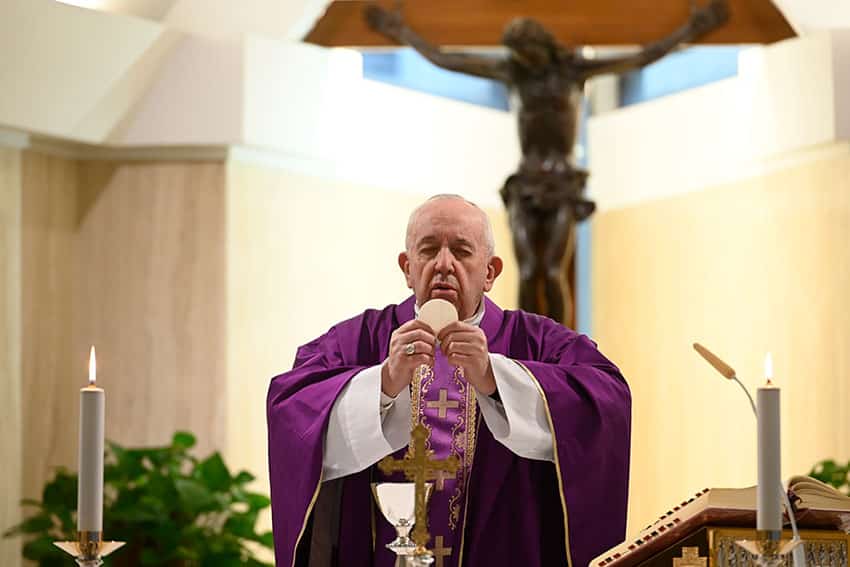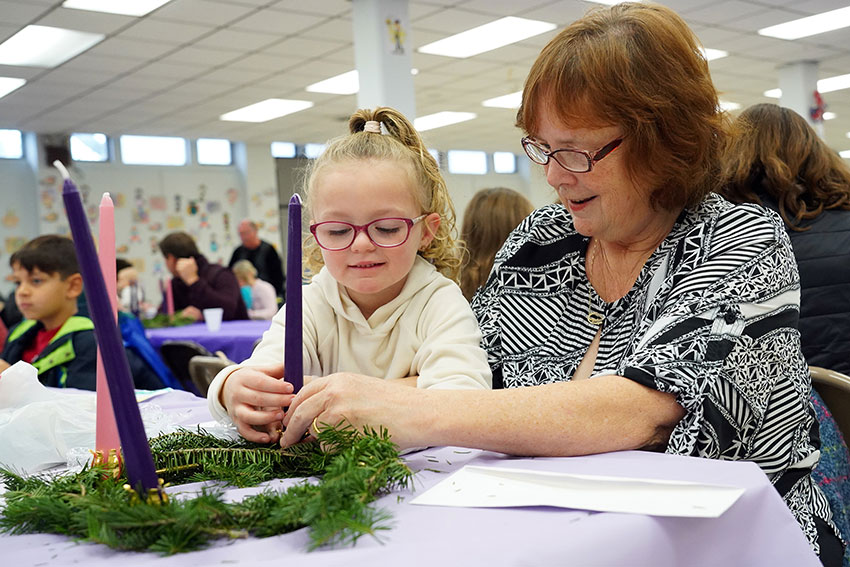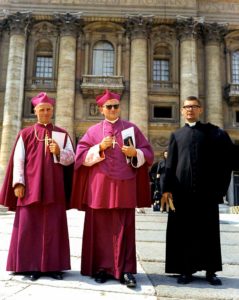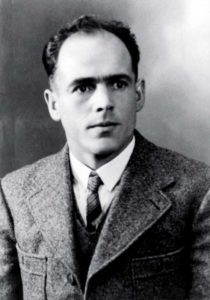
The listening process preparing for the Plenary Council revealed repeated demands for greater lay participation in the Church. A number of the submissions insisted that lay people be able to assume roles that have traditionally been the domain of priests and deacons. The expectation that lay people should be given a greater role in the life and ministry of the Church is considered to be a fulfilment of the teachings of the Second Vatican Council. The Second Vatican Council, some say, ushered in the age of the laity.
The age of the laity?
There is no doubt that the post-conciliar period has seen an increase in lay ministry in the Church. Such ministries include Extraordinary Ministers of the Eucharist, Readers at Mass, catechists in State Schools and in sacramental preparation, pastoral council members, visitors of the sick and needy, youth ministers, and participants in a wide range of charity and justice programs. Also lay people have assumed roles of leadership in key Catholic organisations like education, hospitals, aged care services and social services.
‘Ministry’ – but what kind did Vatican II foresee?
The application of word ‘ministry’ to roles that the laity have undertaken does raise questions about the relationship between the ordained ministry and that performed by lay members of the Church.
In a passage on the role of the laity in the Vatican Council document on the Church, Lumen Gentium, the document states: “What specifically characterises the laity is their secular nature. … They live in the world, that is, in each and in all of the secular professions and occupations. They live in the ordinary circumstances of family and social life, from which the very web of their existence is woven. They are called there by God that by exercising their proper function and led by the spirit of the Gospel they may work for the sanctification of the world from within as a leaven”. (LG 31)
Witnesses in the world
The Council Fathers understood that the primary role of the lay person was in fact to be a witness of faith and an instrument of evangelisation in the world. The Second Vatican Council document on the mission of the Church, Ad Gentes, taught that all the baptised have a missionary responsibility. It said, “Every disciple of Christ, as far in him lies, has the duty of spreading the Faith”. (AG 23)
The Council document on the apostolate of the laity, Apostolicam Actuositatem, confirms this perspective on the role of the lay person in the Church: “The laity must take up the renewal of the temporal order as their own special obligation. Led by the light of the Gospel and the mind of the Church and motivated by Christian charity, they must act directly and in a definite way in the temporal sphere”. (AA 7)
While lay ecclesial ministry may be the product of developments in the Church following the Council, it was not the primary focus for the Council.
Certain roles – but never substitues
The Council did acknowledge the role of lay ecclesial ministry and its contribution to the life and mission of the Church. In Apostolicam Actuositatem the Council states, “Finally, the hierarchy entrusts to the laity certain functions which are more closely connected with pastoral duties, such as the teaching of Christian doctrine, certain liturgical actions, and the care of souls. By virtue of this mission, the laity are fully subject to higher ecclesiastical control in the performance of this work”. (AA 24)
This is explained in the Dogmatic Constitution on the Church (Lumen Gentium) as assistance to the pastoral responsibilities of the priest: “Besides this apostolate which certainly pertains to all Christians, the laity can also be called in various ways to a more direct form of cooperation in the apostolate of the Hierarchy”. (LG 33)

The clericalised layman
The Council considers that the primary role of the lay person is to be found in the world, rather than within the ecclesial environment. The experience since the Council has been a profusion of new roles for the laity within the Church which run the risk of viewing the role of the lay person in the Church chiefly within ecclesial structures and not out in the world. It is important to note that when a lay person takes on an ecclesial role, it is in union with and under the direction of the ordained ministry. An ecclesial role for the lay person does not exist in its own right.
What has in fact occurred within the Church especially over the past 50 years has been referred to as the ‘clericalisation of the laity’. This attitude continues to drive current attitudes among some that lay people should assume more roles of ministry and governance within the Church. Focus on this goal blurs the fundamental role of the lay person in the mission of the Church.

Confusion about the priesthood
The emphasis on the lay person being more involved directly within Church structures can easily lead to confusion about the role of the priest. While the priest has as his first role the mission to evangelise, he is also to be a pastor overseeing and animating the Christian community. He has the unique role of being a minister of the sacraments. His task is to enable lay people to be nourished and formed in the Christian life so that they can be effective witnesses to Christ in the world.
The dangers of a creeping clericalisation of the laity has been highlighted by recent popes. In 2002 Pope St John Paul II emphasised that the relationship between priests and the faithful is one of complementarity. Speaking to some bishops he said that the Second Vatican Council resulted in “the awakening of the lay faithful in the Church,” but that this does not signal an alteration in the laity’s role in the evangelising mission of the Church in the world.
In the name of the Council – but not of it

He commented that there were people who believed that “the decrease in the number of priests is the work of the Holy Spirit, and that God himself will lead the Church, making it so that the government of the lay faithful will take the place of the government of priests.” He then said, “Such a statement certainly does not take account of what the Council Fathers said when they sought to promote a greater involvement of the lay faithful in the Church.”
The Pope went on to say: “In their teachings, the Council Fathers simply underscored the deep complementarity between priests and the laity that the symphonic nature of the Church implies. A poor understanding of this complementarity has sometimes led to a crisis of identity and confidence among priests, and also to forms of commitment by the laity that are too clerical or too politicised.”
Usurping a sacramental role?
Pope St John Paul II warned that the involvement “by the laity becomes a form of clericalism when the sacramental or liturgical roles that belong to the priest are assumed by the lay faithful, or when the latter set out to accomplish tasks of pastoral governing that properly belong to the priest”. While recognising that lay people do assist the priest in the local parish community he stressed that “It is the priest who, as an ordained minister and in the name of Christ, presides over the Christian community on liturgical and pastoral levels.”
He said that “The commitment of lay persons is politicised when the laity is absorbed by the exercise of power within the Church. That happens when the Church is not seen in terms of the mystery of grace that characterises her, but rather in sociological or even political terms.” The clericalisation of the laity and laicisation of the clergy occurs when “it is not service but power that shapes all forms of government in the Church, be it in the clergy or the laity.”
Confusing power with the working of grace

This point was also expressed by Pope Francis in Querida Amozonia when he said, “There are those who think that what distinguishes the priest is power, the fact that he is the highest authority in the community” and then makes reference to the teaching of Pope St John Paul II about the role is actually about the functioning of grace.
At this time it is important that a distinction is made as to what constitutes the specific role of the priest (for example, the celebration of the Mass and Sacraments); what ecclesial ministries are appropriate for a lay person to assist the priest (for example, taking Holy Communion to the sick); and what roles within the Christian community are specifically their own (for example, providing music at the Mass).
Clarifying and distinguishing the lay vocation and ministerial priesthood
As the Church prepares for the Plenary Council such considerations should assist us in ensuring that a clear distinction is made between the role of the clergy and that of the laity is retained. On this basis a sound understanding of how lay people can contribute to the mission of the Church in Australia can be articulated.
Related
